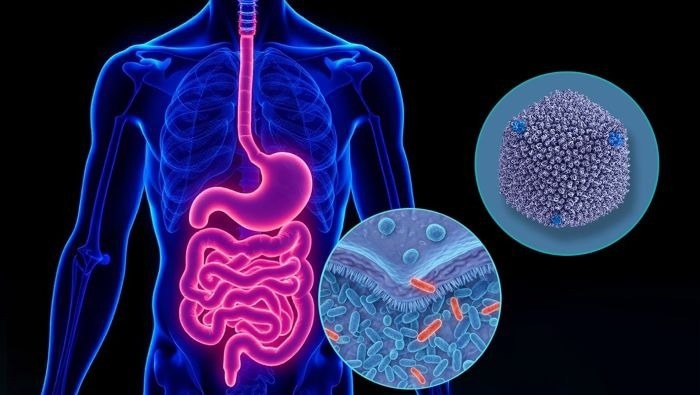A new study, led by researchers at the University of Liverpool, has revealed how pathogenic bacteria construct tiny protein-based compartments, known as Eut microcompartments, which enable them to digest ethanolamine - a nutrient commonly found in the gut.
 Image Credit: University of Liverpool
Image Credit: University of Liverpool
Eut microcompartments are critical for bacterial growth and virulence. Understanding their assembly offers new insight into how bacteria survive and thrive in the gut and could help identify potential targets for antimicrobial therapies.
The study, published in Science Advances, reveals the precise sequence of events and protein interactions required for microcompartment formation.
Using a combination of super-resolution fluorescence microscopy, genetic engineering, structural biology, biochemical assays, and computational modelling, the team mapped the roles of individual proteins that make up the
Eut microcompartment in Salmonella.
By studying bacteria with mutations in specific proteins, the researchers identified, for the first time, the key players and step-by-step processes involved in compartment assembly. They showed that construction begins with the protein shell, into which enzymes needed for ethanolamine breakdown are subsequently packed.
A protein called EutQ was found to play a critical role in this process, acting as a molecular link that ensures enzymes are correctly captured inside the shell. Without EutQ, compartment assembly fails and bacterial growth is severely impaired.
The study also revealed that the enzymes inside the compartment behave like a liquid droplet, dynamically moving and interacting in ways that enhance metabolic efficiency.
Ethanolamine, a by-product of cell membrane breakdown, is an abundant nutrient in the gut and an important carbon and nitrogen source for many pathogenic bacteria, including Salmonella.
This research provides a detailed molecular roadmap for how bacteria exploit this resource, advancing understanding of their metabolism and infection mechanisms.
It was known that bacteria build these compartments to safely and efficiently digest ethanolamine, but our research reveals the precise molecular steps involved. It is exciting to observe in molecular detail how dynamic protein condensates contribute to organelle construction and function.”
Dr Mengru Yang, First Author, Research Associate, University of Liverpool’s Institute of Systems, Molecular and Integrative Biology
Professor Lu-Ning Liu, corresponding author, said: “This work significantly advances our understanding of bacterial microcompartment assembly mechanisms, potentially offering new avenues to disrupt pathogen metabolism and infection. These insights could drive innovations in antimicrobial strategies as well as synthetic biology applications.”
The research team plan to explore how these assembly mechanisms operate in other bacteria relevant to human health. They also aim to probe atomic-level protein interactions and test ways to disrupt or re-engineer these systems for medical applications.
The research was funded by the Biotechnology and Biological Sciences Research Council (BBSRC) and involved collaborators from Huazhong Agricultural University and Ocean University of China.